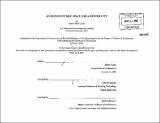An indoor public space for a winter city
Author(s)
Crane, Justin Fuller
DownloadFull printable version (20.91Mb)
Other Contributors
Massachusetts Institute of Technology. Dept. of Architecture.
Advisor
John Fernandez.
Terms of use
Metadata
Show full item recordAbstract
Winter is a marginalized season in North American design. Even though most cities in the northern United States and Canada have winter conditions-snowfall, ice, freezing temperatures, and long nights-for substantial portions of the year, their built environments do little to embrace their climate. Architecture confronting the problems of design for a winter city must have two complementary components-a social one that addresses comfort and the interaction between the public and private realms, and a technical one that addresses energy- efficiency. First, winter cities lack equitable and attractive indoor places of refuge from the elements. The most common contemporary response to the climate is to create huge commercial developments. These take the form of free-standing megamalls or networks of indoor storefronts winding through downtowns via tunnels and elevated skyways. These draw people who can afford to shop away from the public realm while leaving city streets deserted. Second, winter cities use superlatively high amounts of energy for heating, and this consumption continues to grow as a result of sprawling suburbs and generic building that disregards its context. The proposed mediatheque for St. Paul, Minnesota confronts these problems by using thermal qualities as a driver for its design. Like winter, thermal qualities are an often ignored factor in architecture. However, by using them to shape space, choose materials, and complement social interaction, the design for an indoor urban space will welcome all members of the public, use energy responsibly, and celebrate diverse activities throughout the day and the year.
Description
Thesis (M. Arch.)--Massachusetts Institute of Technology, Dept. of Architecture, 2005. Includes bibliographical references (p. 90-93).
Date issued
2005Department
Massachusetts Institute of Technology. Department of ArchitecturePublisher
Massachusetts Institute of Technology
Keywords
Architecture.